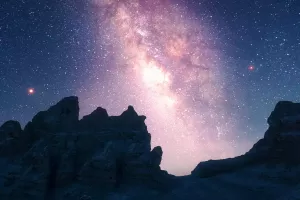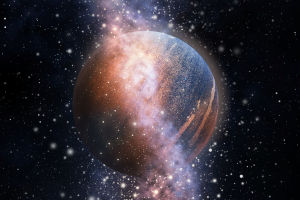With the continuous development of science and technology, human beings have begun to explore planets other than the earth, and the nearest moon to us has become the object of human research. We all know that Galileo was the first person to observe the moon with a telescope. In fact, the first person to look at the moon with a telescope and draw a sketch of the lunar surface based on his observations was the British mathematician Thomas Harriet.
There is no water, no atmosphere, and no living things on the moon. What we can see is the contrast between light and dark, the bright place is the moon land, and the dark place is the moon sea. But in fact, there are more pitted craters on the moon, and gray-white is its eternal tone. But what many people don't know is that the most mysterious part of the moon is not on the side we see, the far side of the moon is its secret.
Because the moon's rotation is the same as its revolution. When the moon revolves around the earth, it also revolves around itself, so the moon always faces the earth on the same side, so humans can only see one side of the moon, and the back side can never be seen, so the back side is full of conjectures. In fact, the back side is not as mysterious as it is rumored. Like the front side, the back side of the moon is also a crater with pits.
These craters on the moon are caused by the impact of comets and cosmic meteorites attracted by the moon's gravity. It can be seen from these craters on the surface of the moon that the moon is not only attractive to people, but also to comets and meteorites. Although these craters are ugly, they are also proof that the moon protects the earth. If it weren't for the moon, then most of the comets and meteorites would head towards the earth, causing unimaginable disasters to mankind, so it can be said that the moon is the protector of mankind.
The moon is the only celestial satellite of the earth. It revolves around the earth year after year. We have become accustomed to its existence. Walking in the moonlight is as natural as breathing air. But just imagine, if there is no moon, what effect will it have on our lives?
The tide disappears
In the Earth-Moon system, the Moon is tidally locked by the Earth, and the Moon's rotation speed is equal to its revolution speed, so the Moon is always facing us. At the same time, the gravitational force of the moon on the earth causes the seawater to periodically fluctuate, forming spectacular ocean tides. Tides are very important. They are the earth's heat transfer belts, transferring heat from the equator to the poles and driving the normal cycle of the earth's climate. Without lunar tides, although the Earth's oceans can creep slowly under the influence of solar tides, the ability of the oceans to balance Earth's heat would be weakened.
Changing seasons
The results of computer simulations of the disappearance of the moon show that without the moon, the inclination of the earth's axis would be greatly changed. For billions of years, the moon has helped stabilize the tilt of the Earth's axis of rotation, and we have had a cycle of spring, summer, autumn, and winter. Without the stabilizing effect of the moon on the earth's axis, the global climate will undergo sudden and great changes, and the rhythmic seasons will cease to exist. It will lead to the blizzard falling today, and the scorching sun will suddenly be in the sky tomorrow. The division of the earth's temperature belt will also be completely broken, the equator may blow cold hurricanes, while the Arctic will be warm as spring.
Slow down the planet
The biggest benefit of the moon to the earth is to slow down the rotation of the earth. It is calculated that the Earth's current rotation speed is only one-sixth of that when the Earth was born, and rotating too fast will cause a series of problems.


